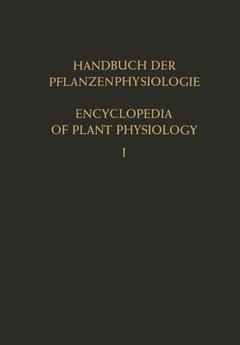Dem Handbuch der gesamten Pflanzenphysiologie, das mit dem vorliegenden ersten Band zu erscheinen beginnt, ist als einziger Vorläufer die klassische "Pflan zenphysiologie" WILHELM PFEFFERS vorausgegangen. In deren zwei Bänden "Stoffwechsel" und "Kraftwechsel", die 1897 und 1904 in Leipzig erschienen, bewältigte der Altmeister auf 1600 Seiten die gesamte Literatur, welche schon damals in großer Fülle vorlag. Diese Leistung muß selbst dann noch bewunderns wert erscheinen, wenn man absehen will von dem hohen Niveau kritischer Durch dringung und der Vielfalt eigener, neuer und fruchtbarer Gedanken, von welchen jede Seite des Werkes zeugt. Seither hat die Physiologie alle anderen Zweige der Botanik in immer wach sendem Tempo überflügelt und immer größere Anziehungskraft auf die Forscher ausgeübt. Ihr Streben, hinter die äußere, symptomatische Erscheinung der Dinge vorzudringen und die bewegenden Zusammenhänge zu suchen, hat ebensosehr unser allgemeines Verständnis für das pflanzliche Lebewesen erstaunlich vergrö ßert, wie es die Grundlage für erfolgreiches Voranschreiten der Land- und Forst wirtschaft, Pharmakologie, Pharmakognosie, Pathologie und anderer Zweige der angewandten Botanik gefestigt hat. Zur Entwicklung der physiologischen For schung haben freilich auch Chemie und Physik entscheidend beigetragen, indem sie neue Gesichtspunkte und Methoden zur vertieften Behandlung alter Probleme und zum Angriff auf immer neue Ziele darboten. Als zwangsläufige Folge dieser stürmischen Entwicklung mußte indessen auch eine ständig wachsende Spezialisierung der physiologischen Arbeitsbereiche in Kauf genommen werden. Heute vermag der einzelne Forscher kaum noch die Nachbargebiete des eigenen Betätigungsfeldes zu überschauen, niemand aber mehr das Ganze.




